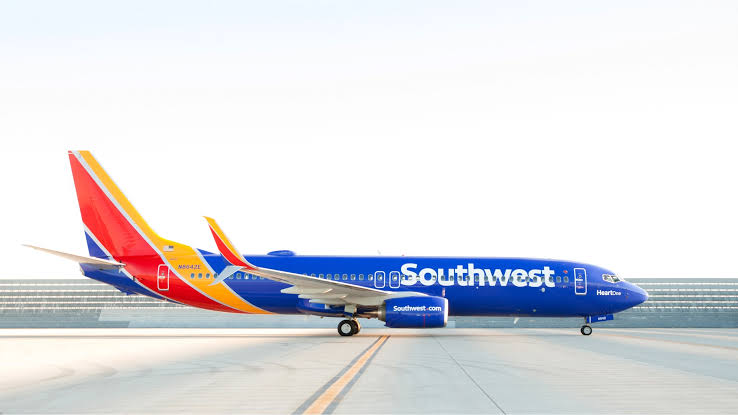“Southwest Airlines Flight Makes Emergency Landing in Tampa After Severe Turbulence Injures Two”
Southwest Airlines Flight Makes Emergency Landing in Tampa After Severe Turbulence Injures Two
Tampa, FL — April 3, 2024 — A Southwest Airlines flight en route from New Orleans to Orlando was forced to make an emergency landing in Tampa on Wednesday after encountering severe turbulence mid-flight, resulting in injuries to a flight attendant and a passenger. The incident has reignited discussions about aviation safety in turbulent air conditions, prompting renewed attention from both regulatory bodies and airlines.
The Incident
Southwest Flight 524, a Boeing 737 aircraft, took off from Louis Armstrong New Orleans International Airport (MSY) at approximately 1:05 PM CDT with 133 passengers and 5 crew members onboard. About 45 minutes into the flight, the aircraft reportedly entered an area of unexpected severe turbulence as it was cruising at 34,000 feet over the Gulf of Mexico.
According to passenger accounts, the turbulence lasted for less than a minute but was described as “violent” and “jolting.” Passengers said the plane suddenly dropped in altitude and shook forcefully, causing unsecured items to fly through the cabin. One passenger, seated near the rear, described the moment as “like a rollercoaster that went off track.” Another stated, “Everything went flying. People screamed. I thought we were going down.”
During the incident, a flight attendant was thrown against the overhead compartments while moving through the aisle and sustained injuries to her back and shoulder. A passenger, who was reportedly not wearing a seatbelt at the time, struck their head on the seat in front of them and lost consciousness temporarily. Both individuals were treated by medical personnel immediately after landing and transported to a local hospital in Tampa. As of Thursday morning, both were reported to be in stable condition.
Emergency Landing in Tampa
After assessing the situation, the flight crew declared an emergency and diverted to Tampa International Airport (TPA), landing safely at 2:17 PM EDT. Emergency crews were on standby as the plane taxied to the gate.
Southwest Airlines issued a statement shortly after the incident:
> “Flight 524 from New Orleans to Orlando experienced unexpected turbulence and was diverted to Tampa out of an abundance of caution. Two individuals sustained injuries and were transported to a local medical facility for evaluation. Safety is our top priority, and we are cooperating fully with the FAA investigation.”
Passengers were offered alternate travel arrangements to Orlando and given compensation vouchers. While some were shaken, there were no additional injuries reported.
FAA Investigation Underway
The Federal Aviation Administration (FAA) has launched an investigation into the incident. Preliminary findings suggest the aircraft entered a patch of clear-air turbulence (CAT), a type of turbulence that occurs without visible weather indicators such as storms or cloud formations, making it difficult to detect in advance.
FAA spokesperson Anna Reynolds stated,
> “We are reviewing cockpit data and weather patterns in the area during the time of the incident. While the crew responded appropriately, it’s critical to understand what contributed to the intensity and unexpected nature of the turbulence.”
The National Transportation Safety Board (NTSB) has not opened a separate investigation at this time but is monitoring the FAA’s findings.
Growing Concerns About Turbulence
This incident is the latest in a growing number of turbulence-related injuries across U.S. airlines in recent years. As climate patterns shift, aviation meteorologists have noted a rise in atmospheric instability that may contribute to more frequent and intense occurrences of clear-air turbulence.
According to a 2023 report by the National Weather Service, turbulence is responsible for the vast majority of in-flight injuries to airline crew members. Flight attendants, in particular, are at heightened risk due to their mobility during service. The report noted that between 2009 and 2022, turbulence-related injuries accounted for over 70% of all serious incidents reported to the FAA.
Experts like Dr. Paul Williams, an atmospheric scientist at the University of Reading in the UK, warn that severe turbulence events could double or triple in frequency by mid-century due to jet stream changes linked to global warming.
> “Aircraft are built to withstand turbulence,” said Dr. Williams. “The challenge is protecting passengers and crew when turbulence occurs without warning. Enhanced forecasting tools and proactive safety protocols are now more important than ever.”
Southwest’s Response and Safety Protocols
Following Wednesday’s emergency, Southwest Airlines reiterated its commitment to safety and highlighted several recent adjustments aimed at reducing injury risks during turbulence.
In December 2024, the airline implemented a change in its service protocols, ceasing food and beverage service at 18,000 feet rather than 10,000 feet during descent. This allows passengers and crew more time to be seated and secured ahead of potential turbulence.
The airline also provides regular turbulence-awareness training to flight crews and equips its aircraft with advanced weather radar and turbulence detection systems. However, experts acknowledge that not all turbulence can be predicted, especially when it’s clear-air based.
A spokesperson from the Transport Workers Union Local 556, which represents Southwest flight attendants, called for further action:
> “This incident underscores the ongoing dangers flight attendants face. We need better tools, updated equipment, and a stronger emphasis on enforcing seatbelt compliance among passengers.”
Passenger Awareness and Preparedness
Aviation experts urge passengers to always wear seatbelts while seated, even when the seatbelt sign is off. While modern airliners are engineered to endure even extreme turbulence without structural damage, unbelted passengers are at risk of serious injury from sudden motion.
“Think of your seatbelt as your first line of defense,” said John Nance, an aviation analyst and former commercial pilot. “It may seem like a small thing, but in moments like these, it makes all the difference.”
Looking Ahead
As climate variability continues to affect air travel conditions, both airlines and regulatory bodies are expected to refine strategies for managing in-flight safety. The FAA is currently investing in enhanced turbulence forecasting systems and working with airlines to implement more conservative flight routing where risk zones are identified.
For Southwest Airlines, this latest incident serves as a sobering reminder of the unpredictable nature of flight — and the importance of rapid, professional response when challenges arise. Fortunately, in this case, quick actions by the flight crew and ground teams prevented a frightening situation from becoming a tragedy.
As investigations continue, passengers and aviation stakeholders alike hope that lessons from this event will lead to improved practices and even greater resilience in the skies.






![7-letnia Kasia skradła show. Oto dzieci Karola Nawrockiego [ZDJĘCIA]](https://sportdomain.com.ng/wp-content/uploads/2025/06/1748899617796.jpg)